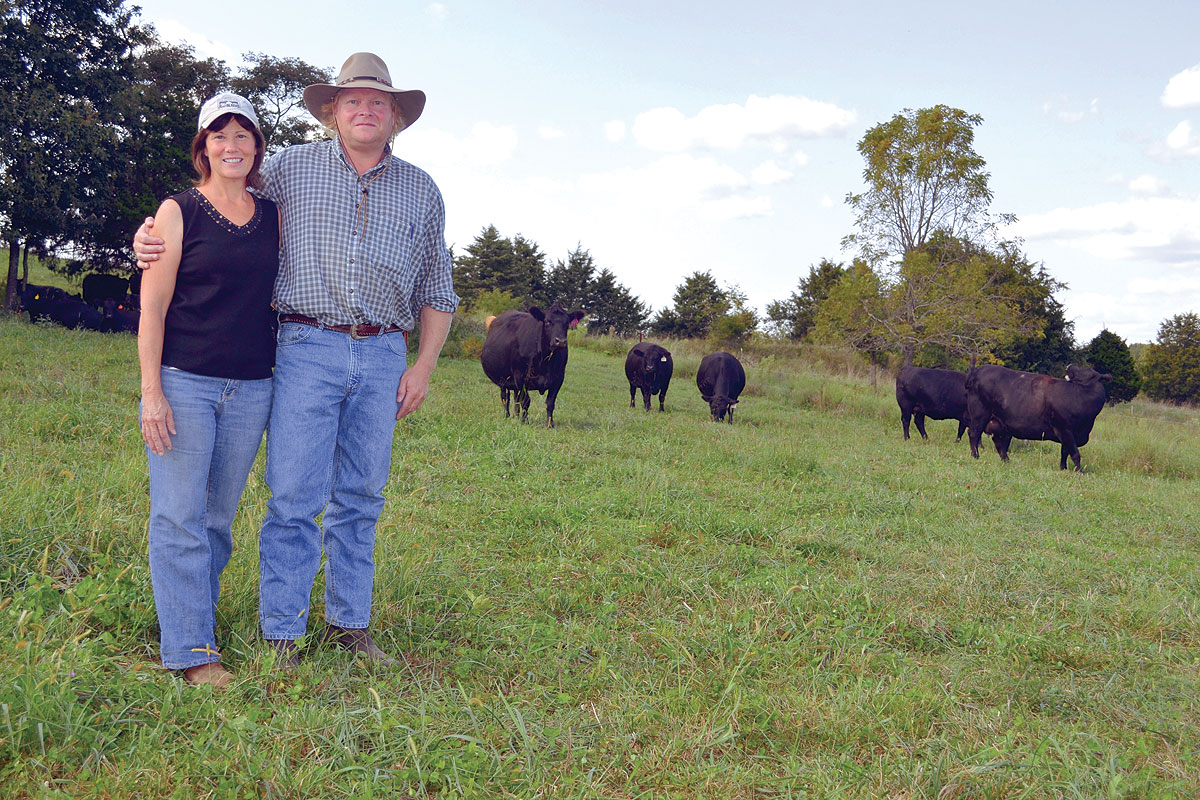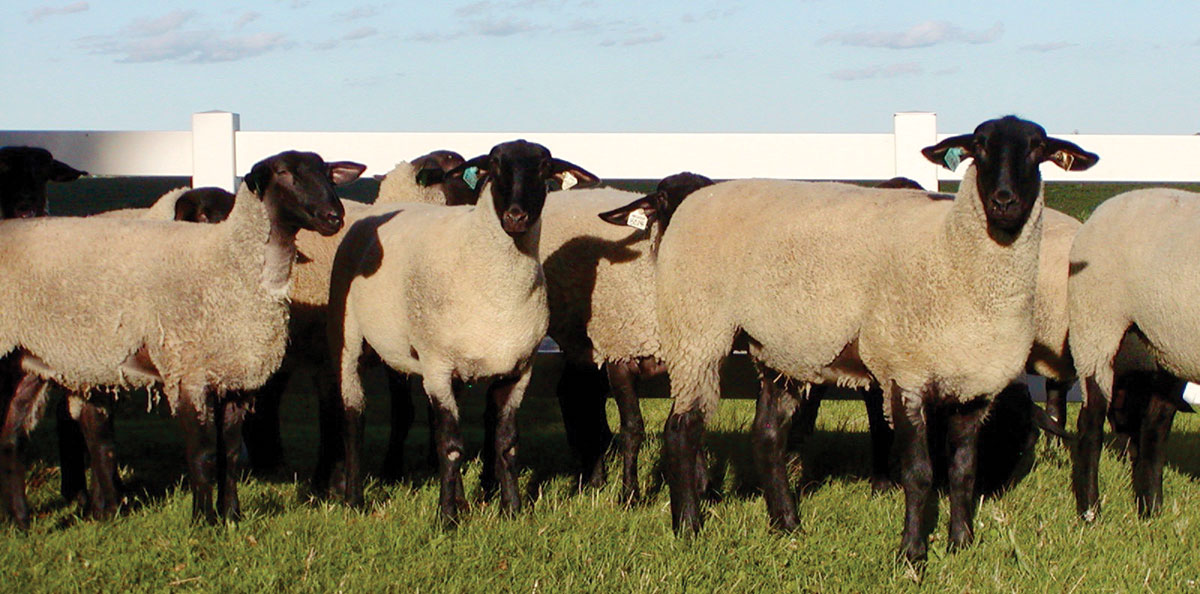
Greg and Lynn Walker went from grass-fed beef to seedstock production after moving to the Ozarks
Greg Walker has his own history in agriculture, growing up with Herefords in Indiana and working as an ag teacher and FFA advisor there for 22 years before moving to the Ozarks.
After years in the classroom, he and his wife, Lynn felt it was time for a change. While their research confirmed their findings that land prices in Indiana were beyond their reach, they discovered that Missouri is one of the best places in the country to raise cattle and offered affordable acreage. In 2012, they sold their Indiana grass-fed beef operation to one of his former students and today, raise registered Angus as well as crossbred Charolais, on 450 acres in rural Douglas County, outside of Ava, Mo.
“I still love Herefords, but Angus is what people here want,” Greg explained. “When we started years ago in Indiana, we took what we could afford at the state sales, the cows nobody else wanted. Since then with more research, we’ve discovered the difference made by good genetics. We bought bull semen from the Ohlde Cattle Company in Kansas and their efficiency totally changed our herd. Initially, we bought two bulls from them and to date, have bought a total of seven. The qualities we’re looking for – a moderate frame, easy fleshing, decent milking, easy calving with excellent udders which makes it so much better for the calves – are all there. These cattle do well on fescue and both the males and females have good muscle growth.
“The bottom line is this. We have a total of about 150 head. In 2016, we calved 116 females, including 24 2-year-old first time heifers and we weaned 115 live calves. We check our cows each morning and evening during calving season but another great thing about this breed is the convenience trait. You don’t have to watch them 24 hours a day, worrying about the next calf and its survival.”
In addition to being a cow/calf producer, the Walkers also market their farm-raised bulls. Like his cows, Greg is very particular about his breeding program and only the best make the cut.
“This is our job so we are very picky about the bulls we raise and sell,” Greg said. “They must come from a good momma and be born in the first half of that year’s calf crop. They have to be docile. If there is any sign of craziness, that’s something I don’t want to deal with and I don’t want anyone else to either. I don’t want a calf over 80 pounds at birth because a big, but dead calf isn’t worth anything. A lot of people are part-time farmers these days and they don’t have time to be checking their cows all the time, so we want to sell them a product that will not be a problem to them later.
“Like us, they want to raise good quality cows. We want to sell them cattle that work for them, rather than them working for the cattle. The public has a lot of misconceptions about agriculture and grass-fed beef. We all have to work to educate the rest of the world who are not farmers.”
Last year, Greg kept 10 bulls out of the spring calving season and five out of the fall.
“Like I said, I have my rules about which calves can and should become bulls and which should not,” Greg said. “We sell our excess heifers to folks who want to improve their herd and supply steers to others, including those who now operate my former grass-fed operation in Indiana. The rest, both male and female, go to the feed lot.”
The Walkers also use rotational grazing as taught by Natural Resource Conservation Service.
“The grass is everything,” Lynn added. “We work hard on our pastures and the cattle are great. They’ll tell you when it’s time to move to the next pasture,” she laughed. “They’ll actually line up at the gate.”
Greg and Lynn have two grown children, daughter Lauren has a Ph.D. in neurology and their son is a second lieutenant in the U.S. Army.
Greg concluded that he enjoys the activities involved with working with the cattle and raising the grass that feeds them.
“In the business I had in Indiana, I spent a lot of time on the phone and on email and I find this, just working with the cattle and on the pastures, to be a lot more satisfying.”






